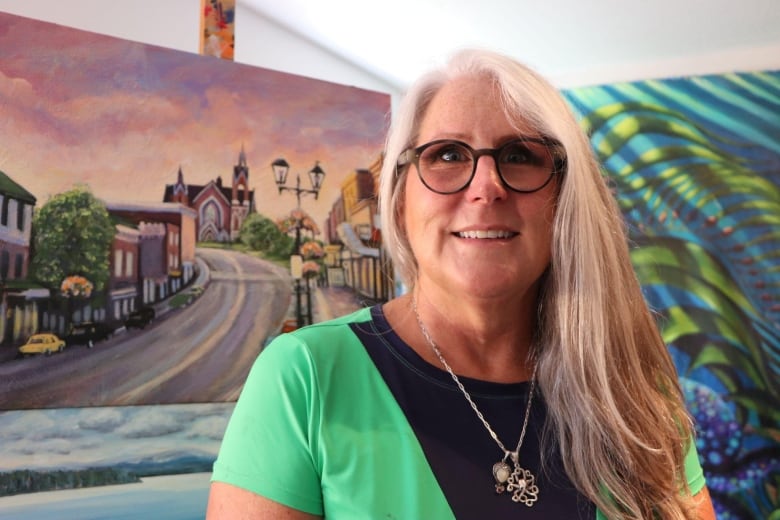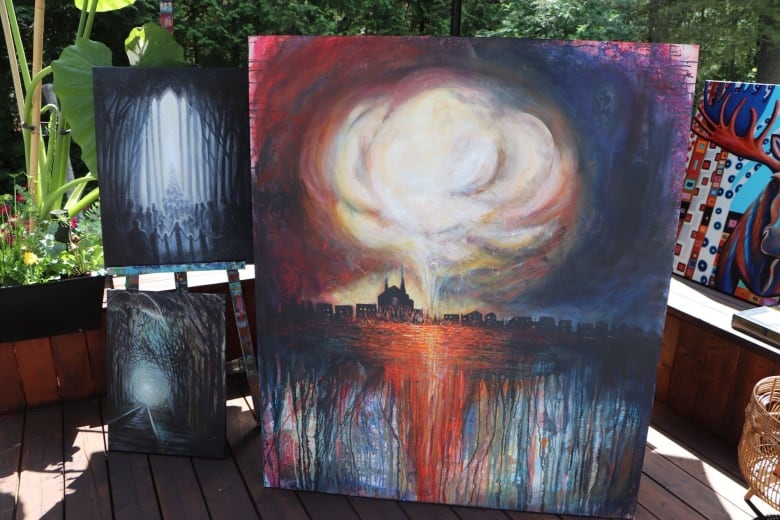
Walking up the steps of the Sainte-Agnès de Lac-Mégantic church overlooking what used to be a bustling downtown core, Louise Latulipe was thinking back to 10 years ago.
The night before a train carrying 72 tank cars of crude oil levelled the core of the town located in Quebec’s Eastern Townships just north of Maine, Latulipe was asleep, a few houses away.
The noise just past 1 a.m. woke her up.
“I thought it was a plane crashing overhead. We walked to the corner and that’s when we saw what was happening,” said Latulipe.
Exactly 10 years later, Latulipe attended a concert at the church — the first of a series of events marking the 10-year anniversary of one of Canada’s worst rail disasters.
The town was destroyed and 47 people were killed.
“I felt it my duty to be here,” said Latulipe, adding that she often visits the memorial throughout the year.
“It’s my way of saying rest in peace.”
Alongside dozens of residents, she entered the church at sunset just before 7 p.m. — listening to a baroque music concert with the ensemble Le Petit Rien.
On Thursday just after 1 a.m., the town will hold a candlelight vigil to mark the moment the train started rolling toward Lac-Mégantic. At 11 a.m., they will hold a commemorative mass and later that evening there will be a concert in the Parc des Vétérans.
The town’s Musi-Café will hold its own concert on Friday at 9 p.m.
Lise Michaud and her husband Yvon Vanasse drove to Lac-Mégantic for the first time since July 6, 2013, to attend the commemoration. Ten years ago they were staying at a local inn when the train derailed.
“I’m feeling sad and heavy,” said Michaud. She says being back in town made her have unusual dreams.
They narrowly escaped the explosion. They were staying downtown, but then decided to move because downtown was too noisy. If not for the change in their accommodation, she says they would’ve been among the victims.
Stéphane Vachon, a long-time resident of the town, will attend all the events in town this week. He says it’s part of his healing process to pay tribute to the lives lost.
“When something like this happens it forces you to heal but also to look forward,” said Vachon.
“I think we’ve done a good job.… Healing is variable, it depends on each person.”
But he says it’s important to respect townspeople who choose not to attend anniversary events. For many, they mark the anniversary alone — still struggling to deal with the grief of losing so many friends, neighbours and loved ones.
Working through grief
Wynne Parkin, another long-time resident, is spending the anniversary at home. The events of the early morning of July 6 are “burnt” in her memory.
Her 13 year-old daughter woke her up at 1:15 a.m.
“She said ‘mom, I think the aliens have landed because the sky’s lit up,'” said Parkin, standing on the porch of her lakefront property.

“So I walked to the end of the street and the sky was on fire and it looked like an atomic bomb.”
“We could see everything on fire and I was like, oh my God my friends live over there. So I’m phoning but no one’s answering their phone,” said Parkin as her voice cracked.
Her three friends died that morning. She says she still can’t shake the feeling she had looking over the lake, 10 years ago.
“It was the visual, but it was the sound,” said Parkin. “It sounded like a monster.”
For six months following the tragedy, Parkin, an artist, stopped painting. But eventually see saw painting as a way to heal.

She created four paintings dedicated to the tragedy. A nearly five-foot painting shows the disaster and a plume of smoke and fire over the town, while another honoured all those who were killed in the inferno.
Another piece shows the downtown core as it was before the disaster, and a smaller neutral painting depicts three sailboats. Parkin says they represent her three friends sailing “off into the mist.”

“Through that process, I kind of worked through my grief,” said Parkin, looking over her shoulder at her paintings resting on an easel.
“I got to paint this ugliness and then I tried to do it in a comforting way … I can’t get over the people who lost loved ones, that kills me.”